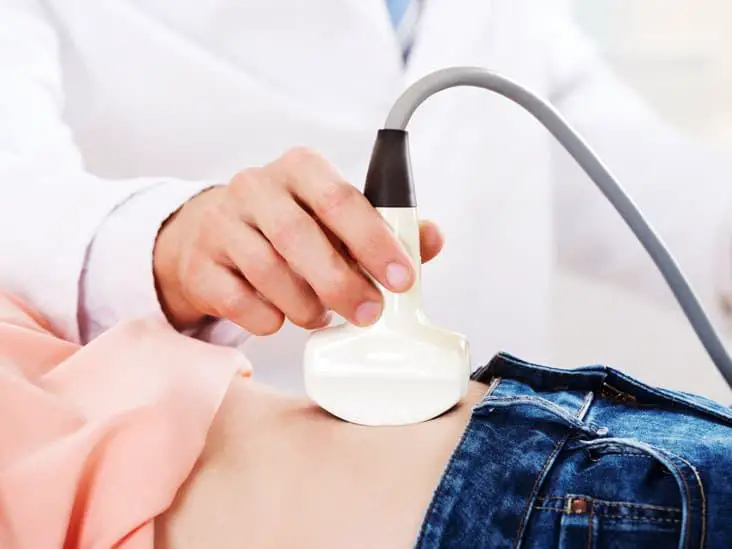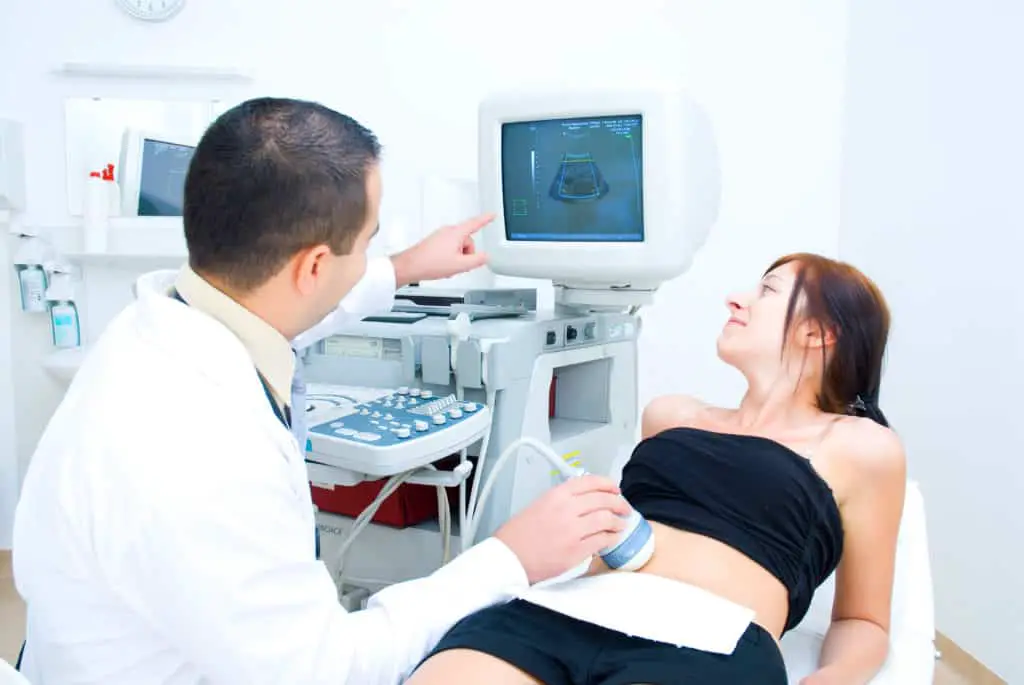Table of Contents
*This post may contain affiliate links. As an Amazon Associate we earn from qualifying purchases.
Medical tests are becoming increasingly advanced in the past decade. Food allergy tests have moved beyond pinprick, and into blood testing, doctors have more specific disease markers to look for, and testing technology is becoming more advanced. As technology becomes more advanced, patients are left to wonder what this testing will cost them. They ask questions like “How much does an ultrasound cost?” and “What will I have to pay to get answers?”
Ultrasound technology is developing at a breakneck pace along with many other forms of medical technology. New developments in the field, along with greater demands on the U.S. healthcare system at large are creating a surge of technician jobs. As more people visit doctors and clinics looking for answers, trained professionals will need to help them identify or eliminate possibilities.
How Much Does an Ultrasound Cost and What Is It, Exactly?
If you’ve ever heard of the term ultrasound before, you might be imagining one of those blurred black and white photos of a baby in the mother’s womb.
However, ultrasounds aren’t just for having babies. Also known as sonography, an ultrasound uses sound waves to create images of the inside of your body. This procedure works when a certified professional places the transducer on the patients’ skin. The device then sends out sound waves at a frequency too high to hear. Sonar and radar technologies use similar principles to find planes and ships.
Sonographs are one of the first tests a doctor will conduct when they’re trying to find out what is causing pain or swelling. There are many issues that can affect your internal organs. Before ultrasounds, doctors either had to guess at what was happening or make an incision to look at the inside of your body.
Types of ultrasounds
There are dozens of applications of ultrasound technology. Chances are good that if your doctors need to see what’s going on with your organs, they’ll take an ultrasound of some kind. However, some types are more common than others. How much does an ultrasound cost if it’s a specific type? More specialized tests will likely end up costing you more.

Abdominal
Abdominal ultrasounds are a useful way to look at many internal organs. Medical imaging is captured in real time and can help doctors examine blood flow and tissue health. Also, abdominal imaging makes it possible for physicians to look at the bladder, gallbladder, kidneys, liver, spleen, and more.Along with discerning organ health, abdominal ultrasounds can also be beneficial in guiding needle biopsies, identify stomach pain and organ enlargementHow much does an ultrasound cost for your abdomen? If you pay out of pocket, you’ll likely pay anywhere from $200 to $400.

Doppler
Doppler ultrasounds are predominantly used to study blood vessels. Patients suffering from blood flow or blood pressure problems will often get a doppler test to determine what is causing the issue.Technicians use doppler tests to spot any clots, plaque buildup, congenital malformation, and gather information on blood flow, speed, and volume.How much does an ultrasound cost that uses Doppler technology? Depending on where you live, this type of test starts at $235 and can get up to $700.

Echocardiograms
Echocardiograms help doctors see what is going on with your heart. It’s often used to detect congenital heart defects. Technicians doing these types of tests will need to get specialized training, as there are several different types of echocardiograms, each used to detect different heart issues. The most common one looks like your typical ultrasound with gel and an ultrasound device. Some patients receive stress echocardiograms, which occur during exercise. Since some heart problems only show up during stress, this can help doctors see how a patient’s heart performs in difficult circumstances.Because echocardiograms are so specialized, they’ll cost you more than your typical ultrasound. Expect to pay up to $2,000 when paying out of pocket.

Obstetric
Obstetric ultrasounds are the ones people are most familiar with. These tests will help expectant mothers learn about the health of their baby. Spotting potential problems before they become serious is a great way to make sure they carry their child to term.Expecting mothers get ultrasounds throughout their pregnancy to make sure their baby is developing as expected. This is a great way to make sure there are no unforeseen complications. Advancements in obstetric technology have also made it possible for doctors to diagnose hereditary conditions before the baby is born.How much does an ultrasound cost in obstetrics? You can expect to pay around the same price as a typical ultrasound. However, pregnancy usually requires several ultrasounds over the course of nine months, so the costs will add up quickly.

Pelvic
Obstetric ultrasounds are the ones people are most familiar with. These tests will help expectant mothers learn about the health of their baby. Spotting potential problems before they become serious is a great way to make sure they carry their child to term.Expecting mothers get ultrasounds throughout their pregnancy to make sure their baby is developing as expected. This is a great way to make sure there are no unforeseen complications. Advancements in obstetric technology have also made it possible for doctors to diagnose hereditary conditions before the baby is born.How much does an ultrasound cost in obstetrics? You can expect to pay around the same price as a typical ultrasound. However, pregnancy usually requires several ultrasounds over the course of nine months, so the costs will add up quickly.

Transrectal
Transrectal ultrasounds are used to check on the health of the prostate. These images help doctors see the prostate and the tissue surrounding it.This test is often used to see if the prostate is enlarged, identify abnormal growths, detect potential disorders, and determine the cause of infertility.How much does an ultrasound cost when done transrectally? Depending on what part of the country you live in, you could pay as little as $100 or as much as $700.
What Ultrasound Technicians Do

Most of a technician’s job is dealing with patients and setting them up for the scan. This job requires you to know human anatomy very well. You also need to know how to position your patient to get the best results.
While technicians won’t make the final evaluation of the results, they have to know how to read what they see well enough to determine if they need to take further scans. You may also get asked how much does an ultrasound cost by the patient. You will need to know how to help patients feel at ease without giving information about something you don’t know.
This job may look easy, but there’s more to it than meets the eye. Along with taking the image, technicians need to know how to get the scans a doctor needs. Everyone’s body works differently, and most don’t look like textbook examples. If the technician can’t get what they need on the first try, they need to know how else to position the equipment to get an accurate scan.
Along with knowing how to conduct the test, technicians need to be able to work with people coming from all sorts of situations. Patients often feel embarrassed or discouraged by news their doctor has given them.
How Much Does Education in This Field Cost?
There are several options available for those looking to become an ultrasound technician. The type of program you attend will depend on what sorts of ultrasounds you expect you will be doing. If you want to do anything related to the heart, you need to study to become a cardiac sonographer. Getting training as a medical sonographer will give you the most versatility, as it works in several areas.
Most technicians gain their post-high school education through an associate degree. However, you also have the option of going through a certificate program or receiving a bachelor’s degree.
You’ll want to make sure you pick an accredited program so that your career prospects will accept the validity of your training. You’ll also need some in-clinic experience, which you will most likely get through an internship or school credit.
The exact cost you can expect to pay for your education depends on what program you choose. Certification programs are by far the most cost-effective, starting at $5,000 and going up to $25,000. Getting a bachelor’s degree will cost more, ranging from $30,000 to $48,000 depending on where you choose to study. However, technicians with a bachelor’s degree tend to make more than those who only have a certification.
How Much do Ultrasound Technicians Make?
The Bureau of Labor Statistics (BLS) lists the annual average wage for ultrasound technicians as $71,410. However, your exact salary as a technician will vary depending on a variety of factors. The more education and experience you have under your belt, the more you’ll likely be paid.
Location also makes a big difference in pay. Technicians in California make around $91,700 a year, while those in Virginia make around $53,680. Salary information was provided by BLS.
More than 60% of technicians work in a hospital. Many will work in the emergency department, trying to identify what has brought the patient to seek immediate treatment. However, there are dozens of different departments in each hospital, and many of them require medical imaging.
Technicians can also find work at doctor’s offices, specialty clinics, and diagnostic clinics. Most opportunities require full-time hours, but if you have a specialty, you could be eligible for more flexible, part-time hours. The answer to how much does an ultrasound cost can also influence how much you make in this field.
Your Future as an Ultrasound Technician
Working as an ultrasound technician is a great way to connect with the patients you serve. You can also start working in this field within a couple of years when choosing a certification program.
One of the greatest benefits of working as a technician is knowing that your efforts are giving patients the answers they need. Your work is actively helping people find ways to address their health issues and make the most of their lives.


